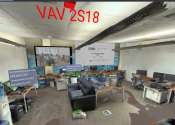Software tool helps cars and pedestrians safely and efficiently share the road
The light turns green. Then, suddenly, the sound of screeching brakes turns into the sickening crunch of metal on metal. A surprisingly high number of auto accidents—21% of all car crashes—occur at intersections with ...
Jun 2, 2022
0
6









